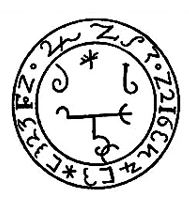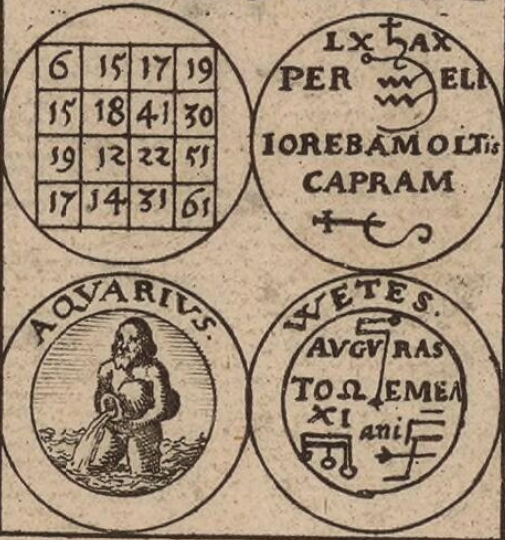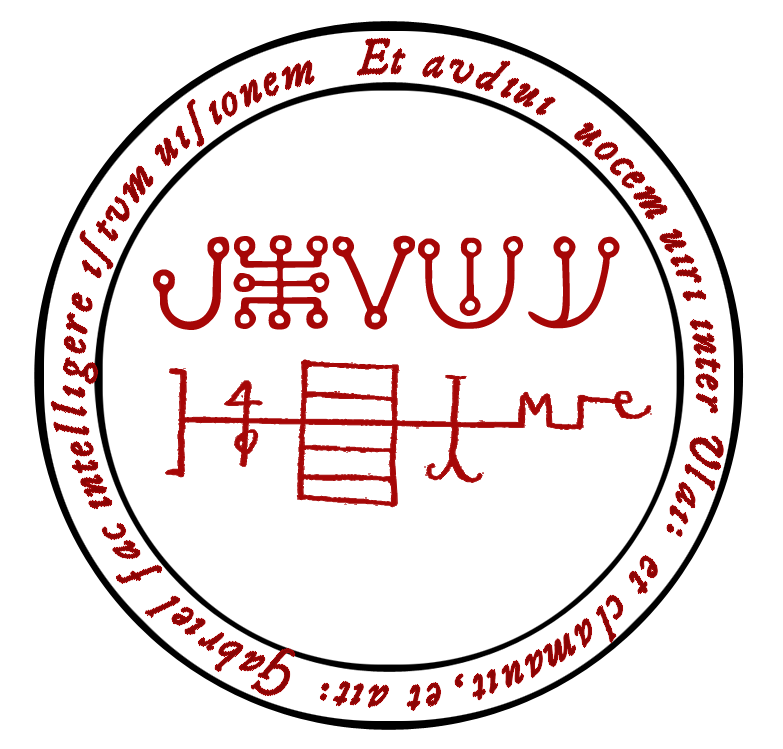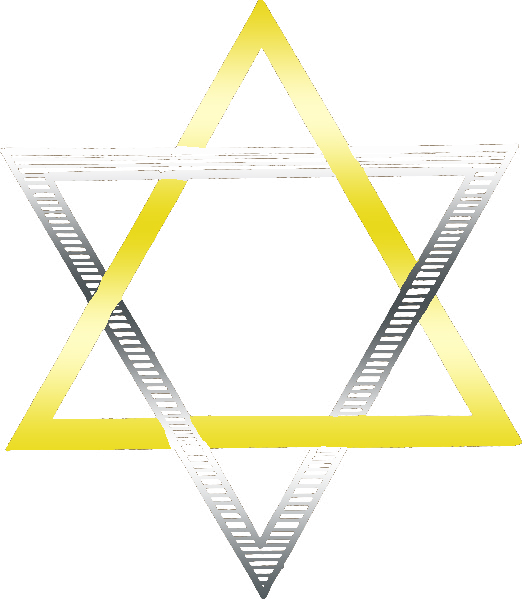Sigil

A sigil is a type of symbol used in ritual magic. The word usually refers to a pictorial signature representing a deity or spirit. Many modern magicians employ sigil creation as a way to symbolically represent their desired outcome.
The term "sigil" is derived from the Latin sigillum, meaning "seal."
History
The use of symbols for magical or cultic purposes has been widespread since at least the Neolithic era. Use of pictorial representations of gods and desired items began with the ancient Egyptian religion. The Egyptians believed that hieroglyphics were sacred to Thoth, the god of writing and therefore, only specially designated priests and scribes were permitted to create them. They held that a pictorial representation of something became that thing in the spiritual realm, which is why funerary art was so important and widespread in Egyptian tombs.
Belief in the sacred power of hieroglyphics was adopted by the Greeks and Romans in the form of protective amulets and talisman pendants, which became widespread throughout the Roman Empire. The Chi-Rho, a symbol representing Jesus Christ used by Emperor Constantine I as a battle flag would be an example of Roman use of a magical sigil.
The Hebrews also followed the Egyptian belief in sacred writing and considered their own written characters to be sacred. This belief system gave rise to the mystical tradition of the Kabbalah, which seeks to connect with divine forces by decoding the words and numbers of the Bible. The various prohibitions on using divine letters, such as YHWH show how respect for symbols are ingrained throughout all sects of Judaism to the present day. The Seal of Solomon is one of the earliest and most commonly-used sigils.
In medieval magic, sigils were treated as occult signs capable of summoning or controlling angels and demons, especially those from Kabbalistic traditions, such as the Goetic demons and the Kabbalistic angels. Grimoires from the Renaissance period often listed many pages of summoning sigils. A particularly well-known list comes from the Lesser Key of Solomon, in which the sigils of the 72 demons of the hierarchy of Hell are given for the magician's use. Such sigils are considered to be the equivalent of the true name of the spirit and thus grant the magician a measure of control over the spirit.
Creating sigils

A common method of creating the sigils of certain spirits was to use a magic squares in which the names of the spirits were converted to numbers, which were then located on the magic square. The locations were then connected by lines, forming an abstract figure.
Artist and occultist Austin Osman Spare (1886–1956) developed his own unique method of creating and using sigils, which has had a huge effect on modern occultism. Spare did not agree with medieval practice of using these, arguing that such supernatural beings were simply complexes in the unconscious, and could be actively created through the process of sigilization.
Rose Cross method
The Rosicrucian method of creating sigils for both summoning or intention-setting has been in use since at least the 1930s. It is in widespread use among modern practitioners of ritual magic, regardless of their specific magical tradition. Occultist Damien Echols has helped popularize this method and his 2022 book, Ritual, focuses on the creation and use of sigils in magical practice. He further expanded on sigil magic with the Echols Sigil Oracle, an oracle deck which utilizes sigils for divination.
The Rose Cross method utilizes a standard template over which a series of lines are drawn connecting the letters together which spell out a simple phrase or single word the magician wishes to invoke. For example, the word "love" or "wealth" might be chosen. If they wanted to summon a specific spirit, they would utilize the name of that spirit.
This method was utilized in by Echols in 2025 to create a custom sigil for professional MMA fighter Aaron Kennedy. The sigil was designed around the phrase "unbreakable will."
Sigil vs Seal

Opinions vary on the precise definition of a sigil compared to a magical seal, but the general consensus agrees that a sigil is intended to carry out a specific function, such as evoking a particular spirit or attract a certain kind of energy to the magician. A seal, on the other hand, could be almost any kind of symbol found in conjunction with magic, astrology, or divination.
Nearly all sigils contain a seal of some kind, but seals are usually just a single symbol.
For example: the summoning sigils for the Kabbalistic angels contain their seal in the center of the sigil, but also have their name written in Malachim, surrounded by a double circle with a Bible verse written inside. This entire construct is the summoning sigil, but the angel's magical seal is merely one part of it.
Use in magic
Many grimoires include sigils and other magic symbols along with invocations for summoning specific spirits or energies. One of the oldest texts devoted almost entirely to displaying sigils is the Magical Calendar, which is essentially a large fold-out poster filled with sigils for angels, astrological figures, and the zodiac.
Other works placing a heavy emphasis on sigils include:
- Lesser Key of Solomon
- Book of Abramelin
- Simon Necronomicon
- The Satanic Bible
- Grimoire of Sigil Magic
- The Grimoire of Heaven and Hell
